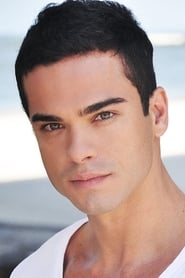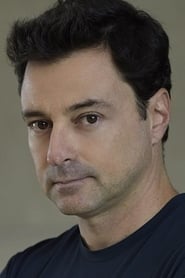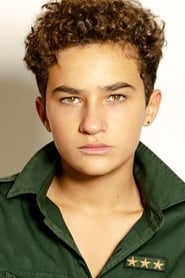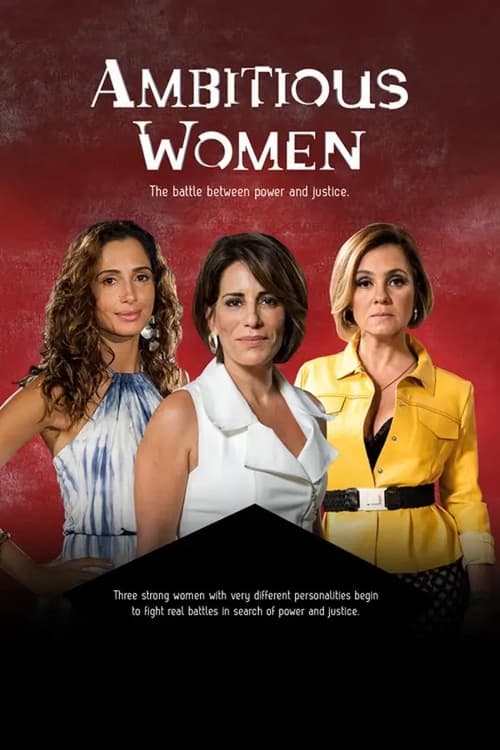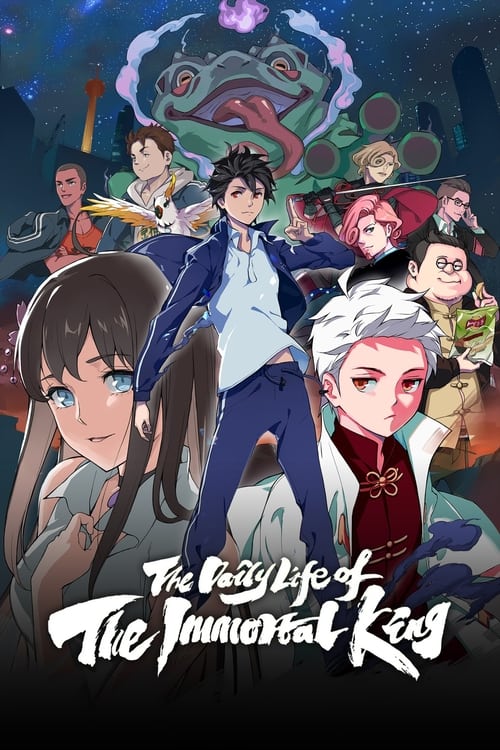
Ask Your Own Question
What is the plot?
In the beginning of "Topíssima," we are introduced to the main character, a strong-willed and ambitious woman named Patricia. She is a successful lawyer who works at a prestigious law firm. Patricia is determined to make a name for herself in the legal world, and her drive is evident in her interactions with colleagues and clients. She is also shown to have a complicated relationship with her family, particularly with her mother, who has high expectations for her.
As the story unfolds, Patricia becomes embroiled in a high-profile case involving a wealthy businessman accused of fraud. The case is complex, and Patricia's skills are put to the test as she navigates the legal system and the pressures from her firm. During this time, she also develops a romantic interest in a charming and enigmatic man named André, who works as a private investigator. Their chemistry is palpable, and they share several intimate moments that deepen their connection.
Meanwhile, the narrative introduces a subplot involving a rival law firm led by a cunning and ruthless lawyer named Otávio. He is determined to undermine Patricia's case and will stop at nothing to win. Otávio's machinations create tension and conflict, as he employs underhanded tactics to discredit Patricia and her team. This rivalry escalates, leading to confrontations in the courtroom and personal attacks that test Patricia's resolve.
As the case progresses, Patricia uncovers evidence that suggests a larger conspiracy at play, involving not only the businessman but also influential figures in the community. This revelation puts her in danger, as those involved will do anything to protect their interests. Patricia's determination to seek justice intensifies, and she becomes more focused on exposing the truth, even at the risk of her own safety.
In a pivotal moment, Patricia confronts Otávio directly, challenging his unethical practices and demanding accountability. This confrontation is charged with emotion, as Patricia stands her ground, showcasing her strength and commitment to her principles. However, Otávio retaliates by threatening her career and personal life, creating a sense of urgency for Patricia to act quickly.
As the climax approaches, Patricia gathers her evidence and prepares for a final showdown in court. The tension is palpable as she faces off against Otávio and his team. The courtroom scenes are intense, filled with dramatic testimonies and unexpected twists. Patricia's passion for justice shines through as she delivers a powerful closing argument that resonates with the jury.
In the aftermath of the trial, the verdict is revealed, and Patricia's hard work pays off as justice is served. However, the victory is bittersweet, as she reflects on the personal sacrifices she made along the way. The emotional weight of the case lingers, and Patricia must come to terms with the impact it has had on her relationships and her sense of self.
The series concludes with Patricia contemplating her future, both professionally and personally. She has grown significantly throughout the story, and while she has achieved a major milestone in her career, she also realizes the importance of balancing her ambitions with her personal life. The final scenes hint at new beginnings for Patricia, as she embraces the challenges ahead with renewed strength and determination.
What is the ending?
In the ending of "Topíssima," the main character, a strong-willed woman named Patrícia, confronts the various challenges and betrayals she has faced throughout the series. The climax reveals the truth about her family's past and the identity of her biological father. Ultimately, Patrícia finds love and reconciliation, while other characters face their own resolutions, leading to a mix of justice and redemption.
As the final episodes unfold, the tension escalates. Patrícia, portrayed with a fierce determination, is seen grappling with the revelations about her family. In a pivotal scene, she stands in front of a mirror, reflecting on her journey, her eyes filled with a mix of anger and hope. The camera captures the subtle tremor in her hands as she prepares to confront those who have wronged her.
In the next scene, Patrícia gathers her closest allies, including her loyal friend and confidant, who has been by her side through thick and thin. They strategize about how to expose the corruption that has plagued their lives, particularly focusing on the antagonist, who has manipulated events to his advantage. The atmosphere is charged with urgency, and Patrícia's resolve shines through as she declares, "We will not let them win."
As the confrontation unfolds, Patrícia faces the antagonist in a dramatic showdown. The setting is tense, with shadows dancing across the walls as they exchange heated words. Patrícia's voice quivers with emotion as she reveals the truth about her lineage, a revelation that shakes the antagonist to his core. The audience can feel the weight of her words, as they carry the burden of her past and the hope for her future.
In a parallel storyline, other characters reach their own conclusions. Patrícia's love interest, who has been a source of both support and conflict, finally comes to terms with his feelings. In a quiet moment, he confesses his love for her, and they share a passionate embrace, symbolizing their commitment to face the future together, no matter the obstacles.
Meanwhile, the antagonist faces the consequences of his actions. In a final twist, he is confronted by the law, and the camera lingers on his face, capturing the mix of fear and regret as he realizes that his time of manipulation has come to an end. The scene is heavy with the weight of justice, as Patrícia watches from a distance, a sense of closure washing over her.
As the series concludes, Patrícia stands on a balcony overlooking the city, the sun setting in the background. The golden light bathes her in warmth, symbolizing a new beginning. She reflects on her journey, the battles fought, and the love found. The final shot captures her serene expression, embodying strength and resilience, as she whispers, "This is just the beginning."
In the end, Patrícia emerges victorious, having reclaimed her identity and found love. The antagonist is brought to justice, and the supporting characters find their own paths to redemption. The series closes on a note of hope, emphasizing the themes of resilience, love, and the importance of facing one's past.
Is there a post-credit scene?
In the TV show "Topíssima," produced in 2019, there is no post-credit scene. The series concludes its narrative without any additional scenes after the credits roll. The final episodes wrap up the main story arcs and character developments, providing closure to the viewers without extending into a post-credit sequence. The focus remains on the resolution of the characters' journeys and the themes of love, betrayal, and justice that permeate the series.
What is the relationship between the characters Antonio and Sofia in Topíssima?
Antonio and Sofia share a complex relationship that evolves throughout the series. Initially, they are drawn to each other due to their shared ambitions and personal struggles. Antonio, a successful lawyer, is captivated by Sofia's determination and resilience as she navigates her own challenges. However, their relationship is tested by misunderstandings, external pressures, and the influence of other characters, leading to moments of tension and reconciliation that highlight their emotional depth.
How does the character of Clara impact the storyline in Topíssima?
Clara is a pivotal character whose actions significantly influence the plot. As a strong-willed and ambitious woman, she often finds herself at odds with other characters, particularly Sofia. Clara's motivations are driven by her desire for power and recognition, which leads her to make decisions that create conflict and drama. Her rivalry with Sofia adds layers to the narrative, showcasing themes of ambition, betrayal, and the quest for justice.
What role does the character of Felipe play in the development of the plot?
Felipe serves as a crucial supporting character whose decisions and relationships impact the main storyline. He is portrayed as a loyal friend to Antonio, but his own romantic interests and personal dilemmas create complications. Felipe's interactions with Sofia and Clara reveal his internal struggles and moral dilemmas, adding depth to the narrative as he navigates loyalty, love, and the consequences of his choices.
How does the character of Verônica influence the dynamics between the main characters?
Verônica is a manipulative and cunning character whose presence creates significant tension among the main cast. Her motivations are often rooted in jealousy and a desire for control, leading her to orchestrate schemes that pit characters against each other. Verônica's actions force the protagonists to confront their own weaknesses and insecurities, ultimately driving the plot forward as they respond to her challenges.
What are the key events that lead to the conflict between Sofia and Clara?
The conflict between Sofia and Clara escalates through a series of key events that highlight their contrasting values and ambitions. Initially, they appear to be allies, but misunderstandings and competitive situations reveal their underlying rivalry. Clara's attempts to undermine Sofia's success, coupled with personal betrayals and revelations about their pasts, intensify their conflict, culminating in dramatic confrontations that test their resolve and character.
Is this family friendly?
"Topíssima," produced in 2019, is a Brazilian telenovela that contains several themes and scenes that may not be suitable for children or sensitive viewers. Here are some potentially objectionable aspects:
-
Romantic Relationships: The show features complex romantic entanglements, including infidelity and love triangles, which may be confusing or inappropriate for younger audiences.
-
Violence: There are instances of physical confrontations and threats, which could be distressing for sensitive viewers.
-
Family Conflict: The narrative includes intense family drama, including betrayal and emotional manipulation, which may be upsetting for some.
-
Crime and Corruption: The plot involves elements of crime, including discussions of illegal activities and moral dilemmas, which may not be suitable for children.
-
Emotional Turmoil: Characters experience significant emotional struggles, including grief, betrayal, and revenge, which could be heavy themes for younger viewers.
-
Social Issues: The show touches on themes of class disparity and social injustice, which may require a level of maturity to fully understand and process.
These elements contribute to a narrative that, while engaging, may not be appropriate for all audiences, particularly children.









